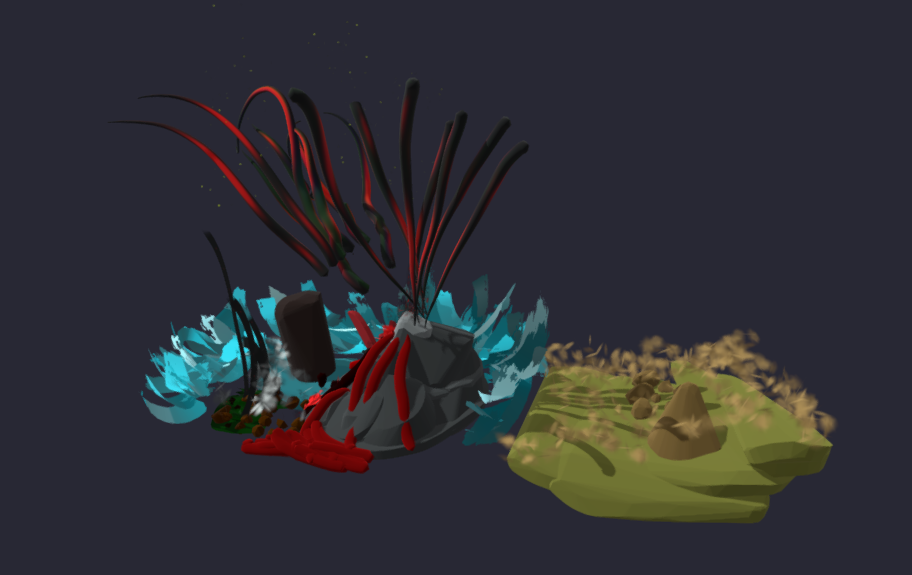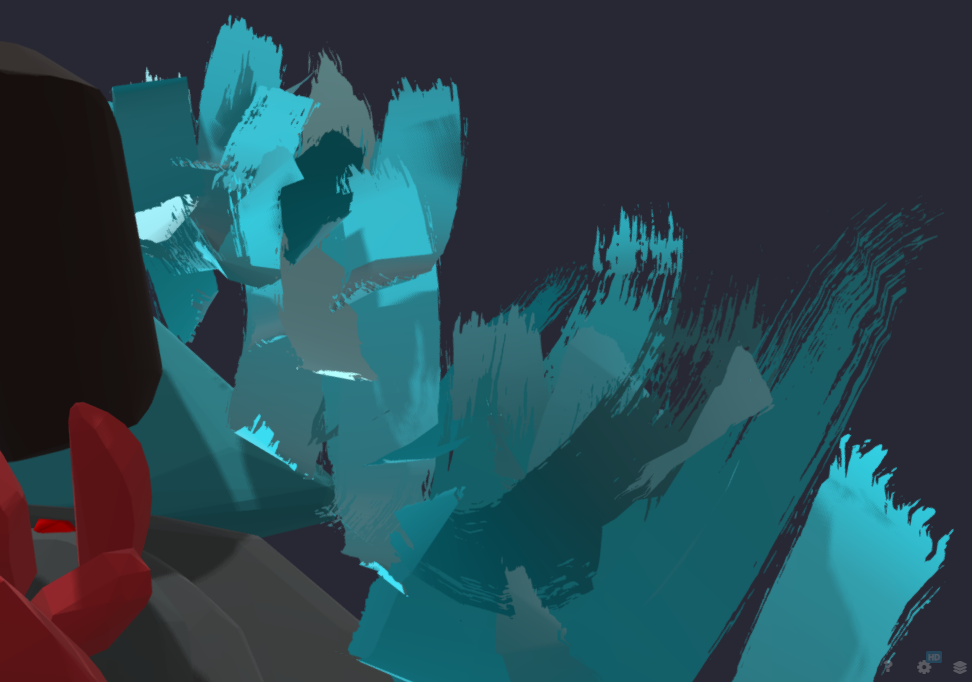Creating A 3D Model In Open Brush
As this was my first time using VR to paint in a 3D landscape, my initial attempt was not great. I attempted to make a tree as it seemed fairly simple – just to get used to the controls.
Whilst it didn’t turn out amazing, I familiarised myself with the different brushes and tools – as well as the feeling of painting in VR.

When everyone in my group had done the same, we decided to create a piece together.
As I went last out of everyone else, there was not too much I could add without destroying everything. So, I decided to add some stylish waves along the edge of the model.

I experimented until I found a brush that had a wave-like texture – then added in a few different blue’s and white’s to give it more depth.
Having to crouch down whilst painting was a completely new experience for me. Whilst I did enjoy it, doing it in a room full of people not wearing VR headsets and having no idea what you were making – was a little daunting.
Nevertheless, I persevered and the result of everyone’s additions to the model was then published to Sketchfab.
Link: https://sketchfab.com/3d-models/untitled-2-a8504dfb4a1845e6bb9d91fe091c8292
Ideas For Production Piece
Adding Effects To A 3D Model:
My first idea for the use of immersive VR art would be to use it to better an already existing 3D model.
Since you can import models into Open Brush, you could paint on top of a pre-existing model to improve it.
For example, a fire or water effect could be useful on top of a 3D model as it can be hard to make them look good via traditional 3D modelling. Some kind of glowing effect emitting from a character could also be easily created using VR painting.
One potential setback of this would be that the effects that are painted would not be animated – as that would take more time than to just create a VFX in Unreal Engine or another tool. However, if an artist wants to quickly prototype what the effects may look like, painting them in VR before committing to making the VFX may be an option.

An example of an existing character could be Akuma from Street Fighter. Before committing to making the red effects around him, the artists could have used VR painting to prototype different ideas for the effect. This would be more constructive than traditional 2D painting as it would allow the artists to see what the effect would look like in a 360 landscape.
A problem with 3D painting in general is that “due to the high cost of purchasing virtual reality system and the physical space needed to run it”, it is “far from popular” (Liu, 2021). This means that only a limited amount of young artists are able to practice using VR art software such as Open Brush, making it less likely to become a popular tool in the future unless VR becomes more accessible to the general public.
Brain Painting:
Whilst in the limited time I have to create a production piece, creating something as advanced as this is unlikely – I believe it is useful to research as it may allow disabled people to use VR in the future.
Brain painting is the act of painting on a digital canvas in Virtual Reality without physical movement being required (McClinton, Garcia & Andujar, 2019). As standard VR relies on the movement of the user’s hands either through using a controller or hand signals, brain painting could be an avenue into Virtual Reality for those with movement limiting disabilities in the future.
References
- Liu, H. (2021) Application and development of VR technology in painting. Journal of Physics: Conference Series, 1744. Available online: https://iopscience.iop.org/article/10.1088/1742-6596/1744/4/042225/pdf [Accessed 7/11/2023].
- McClinton, W., Garcia, S. & Andujar, M. (2019) An immersive brain painting: the effects of brain painting in a virtual reality environment. Augmented Cognition, 436-445. Available online: https://link.springer.com/chapter/10.1007/978-3-030-22419-6_31#citeas [Accessed 7/11/2023].